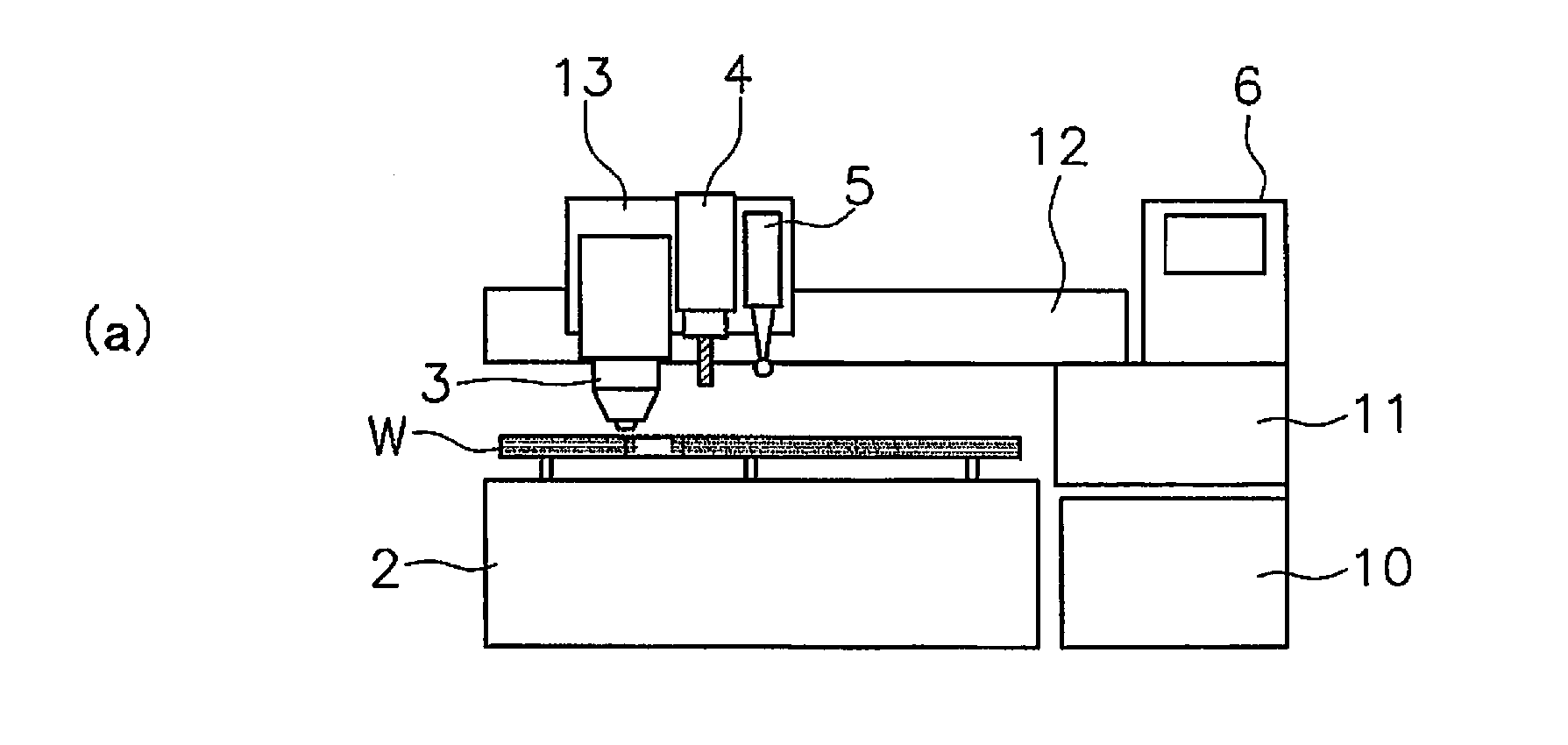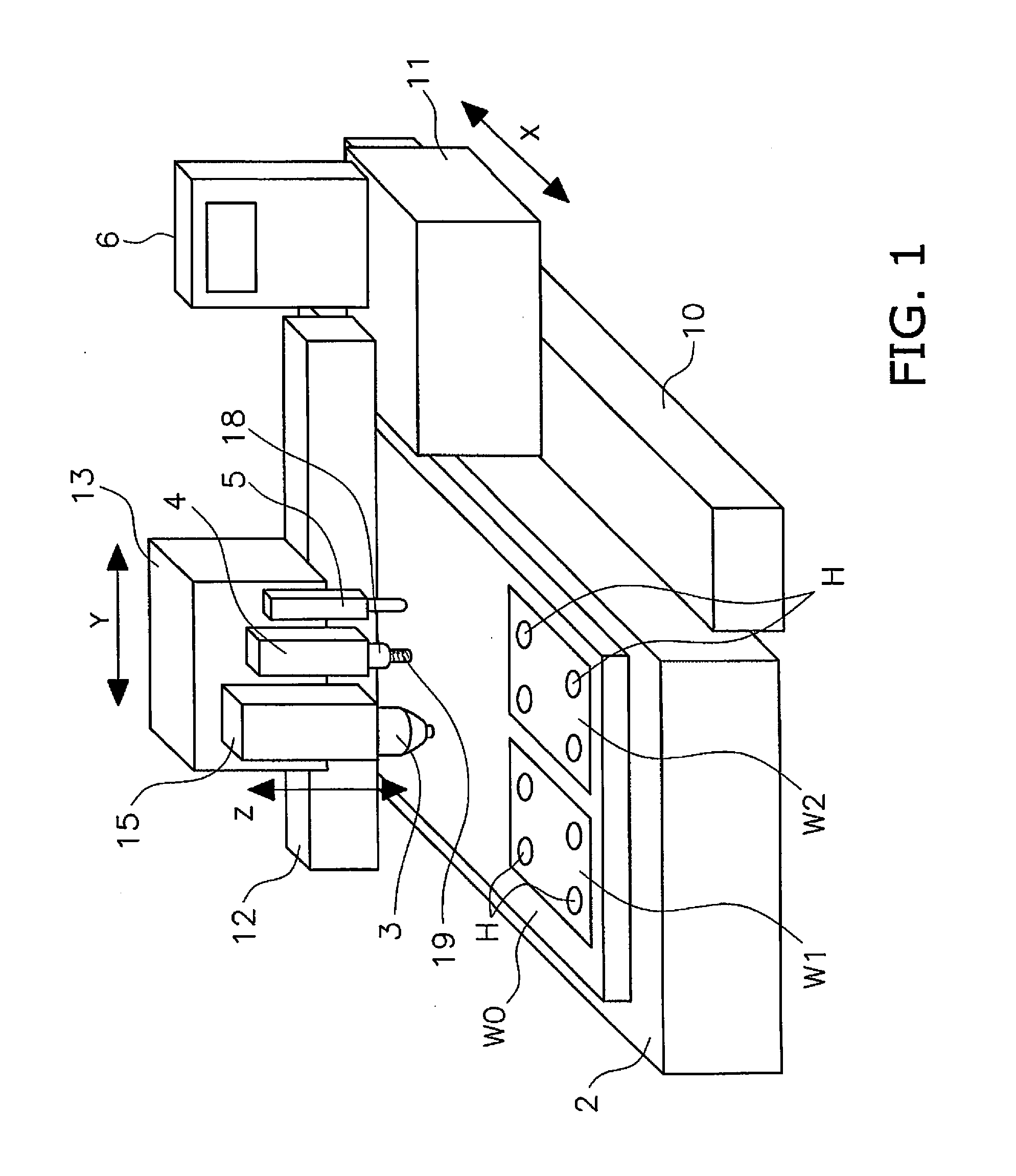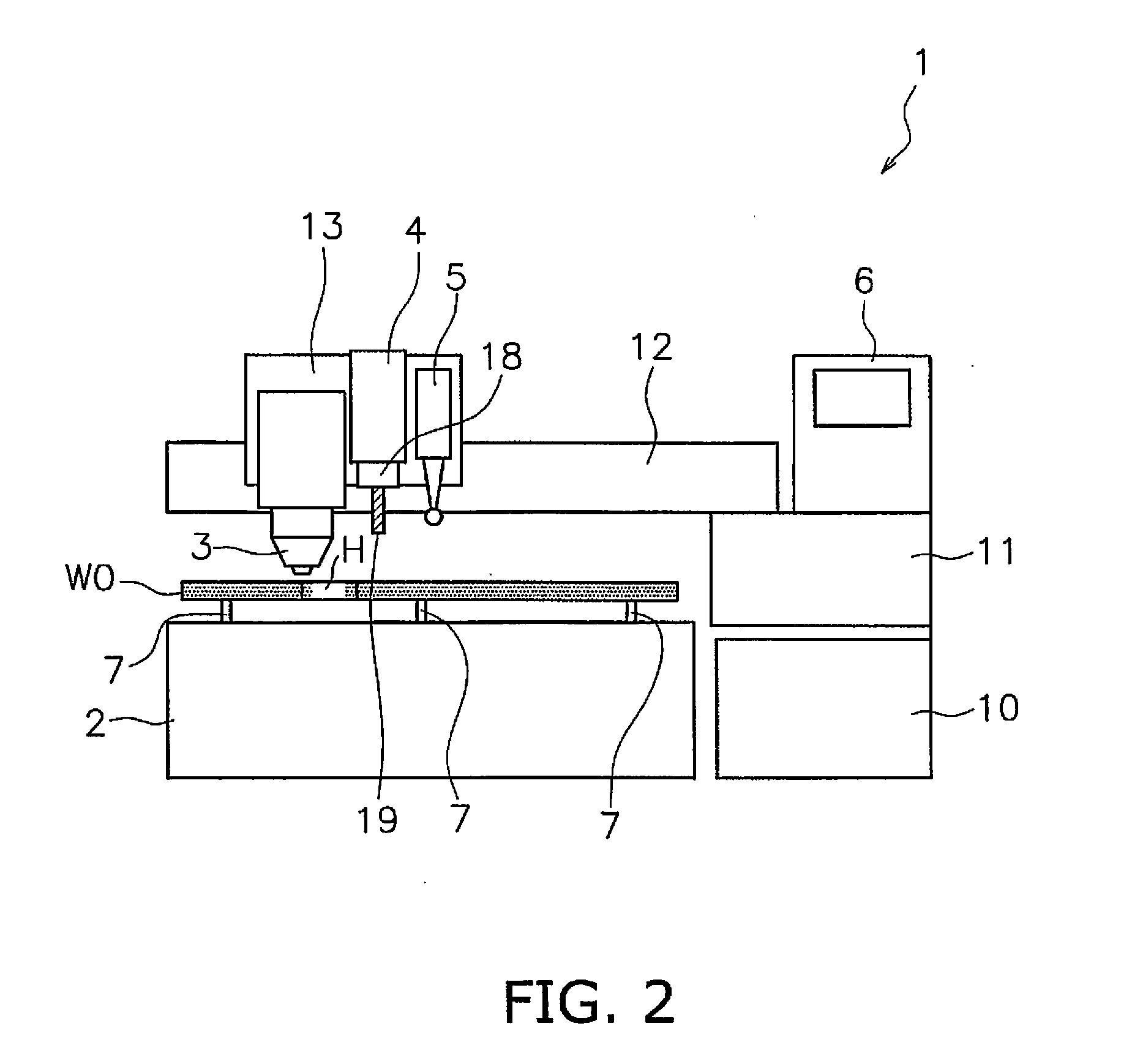Therefore, the manufacturing cost of the device is very high.
However, in another type of machining, such as
end mill machining, the machining head must move in a horizontal direction and thus the machining head cannot be equipped with a mechanism to press down the original sheet.
As a result, the expense of the entire device increases.
Therefore, the manufacturing cost of the device is similarly very high.
Moreover, the provision of a clamping mechanism for clamping the original sheet to the loading table or of a mechanism for pressing down the original sheet onto the loading table is required, and the machining equipment becomes more complex, which raises costs.
An ATC is required for
drill machining and the costs of the machining equipment increases.
These chips become scattered over the original sheet and hinder the travel of the torches during thermal cutting.
In particular, needle-shaped thread-like or spiral chips cannot be blown away with gas or removed by a
brush when the chips become caught in grooves cut in the thermal cutting.
Because the cutting amount during machining is large in the conventional combined machining apparatus, the machining speed is slower than the thermal cutting and overall productivity is reduced due to the combined machining.
It is not practical to perform positioning of the original sheet by means of a crane in this way.
A combined machining apparatus that is able to perform both thermal cutting and machining cannot be used for the purpose of removing a large cut member from a large original sheet (e.g., an original sheet with a length exceeding 6 m) used in bridges, construction machinery or industrial machinery even when applied to a relatively small original sheet that can be clamped in a simple manner, due to the above problems.
The original sheet cannot be secured by a clamping mechanism on the loading table by merely placing the original sheet on the loading table in a thermal cutting
machine.
Moreover, one reason that the clamping mechanism is not provided is that the position of a large original sheet on the loading table is not very precise because the original sheets are replaced by using a crane in operations to replace the original sheets.
Accordingly, when performing
drill machining or
punch press machining, while a mechanism for pressing the original sheet may be provided around a
drill or a punch mold, a simple mechanism for pressing the original sheet cannot be provided when performing
end mill machining as described above because the tool itself moves in the horizontal direction.
As described above, the conditions required for the operation characteristics for
end mill machining and thermal cutting machining are different, and therefore a combined machining apparatus with end mill machining equipment and thermal cutting equipment that does not have a clamping mechanism is not practical.
However, when the hole cutting is implemented when straddling a crosspiece, the end material remains on the crosspiece and may remain in the hole due to the end material catching onto the inner
peripheral surface of the hole.
In such a condition, the tool for cutting in the finishing process cannot be inserted into the inside section of the hole.
The height of the original sheet placed on the loading table in the thermal cutting
machine is not uniform due to
dross adhered to crosspieces of the table and due to warping of the original sheet.
However, when the hole cutting is implemented when straddling a crosspiece, the end material remains on the crosspiece and may remain in the hole due to the end material catching onto the inner
peripheral surface of the hole.
In such a condition, the tool for cutting in the finishing process cannot be inserted into the inside section of the hole.
Moreover, a clamping mechanism for pressing down the original sheet is unnecessary
 Login to View More
Login to View More 


